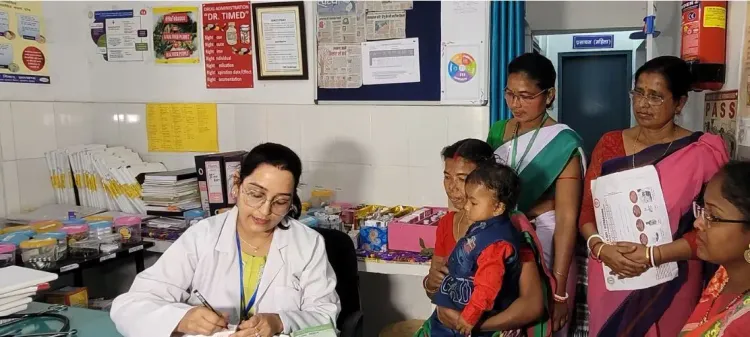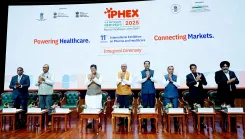Is India Making Progress in Maternal and Child Health Indicators?

Synopsis
Key Takeaways
- India's MMR has significantly decreased.
- Infant and under-five mortality rates are on the decline.
- Strategic government interventions are yielding results.
- Eight states have achieved the SDG target for MMR.
- Robust health data systems are being reinforced.
New Delhi, May 10 (NationPress) India is experiencing a consistent decline in both maternal and child mortality rates, moving closer to fulfilling the UN's Sustainable Development Goals (SDG) 2030 targets, as reported by the Ministry of Health and Family Welfare on Saturday.
Referencing the recently published Sample Registration System (SRS) Report 2021 by the Registrar General of India (RGI), the Ministry highlighted a notable decrease in the Maternal Mortality Ratio (MMR), Infant Mortality Rate (IMR), Neonatal Mortality Rate (NMR), and Under-Five Mortality Rate (U5MR).
According to the Ministry, India's advancement in lowering maternal and child mortality rates surpasses global averages.
This ongoing progress is attributed to strategic initiatives and the government's steadfast dedication, the Ministry added.
The MMR saw a reduction of 37 points, falling from 130 per lakh live births in 2014-16 to 93 in 2019-21. The IMR decreased from 39 per 1000 live births in 2014 to 27 per 1000 live births in 2021.
The NMR dropped from 26 per 1000 live births in 2014 to 19 per 1000 live births in 2021, while the U5MR fell from 45 per 1000 live births in 2014 to 31 per 1000 live births in 2021.
Moreover, the sex ratio at birth improved from 899 in 2014 to 913 in 2021. The Total Fertility Rate remained stable at 2.0 in 2021, showing a significant enhancement from 2.3 in 2014, according to the SRS report.
Furthermore, eight states have achieved the SDG target for MMR: Kerala (20), Maharashtra (38), Telangana (45), Andhra Pradesh (46), Tamil Nadu (49), Jharkhand (51), Gujarat (53), and Karnataka (63).
Twelve states/UT have reached the SDG target for U5MR: Kerala (8), Delhi (14), Tamil Nadu (14), Jammu and Kashmir (16), Maharashtra (16), West Bengal (20), Karnataka (21), Punjab (22), Telangana (22), Himachal Pradesh (23), Andhra Pradesh (24), and Gujarat (24).
Six states/UT have met the SDG target for NMR: Kerala (4), Delhi (8), Tamil Nadu (9), Maharashtra (11), Jammu and Kashmir (12), and Himachal Pradesh (12).
The Ministry credits these improvements to flagship health programs designed to provide dignified, respectful, and high-quality healthcare services, completely free of charge, with zero tolerance for denial of care.
Additionally, the Ministry is strengthening health data systems and real-time monitoring for maternal, newborn, and child health through digital platforms, facilitating data-driven, evidence-based policy decisions.









